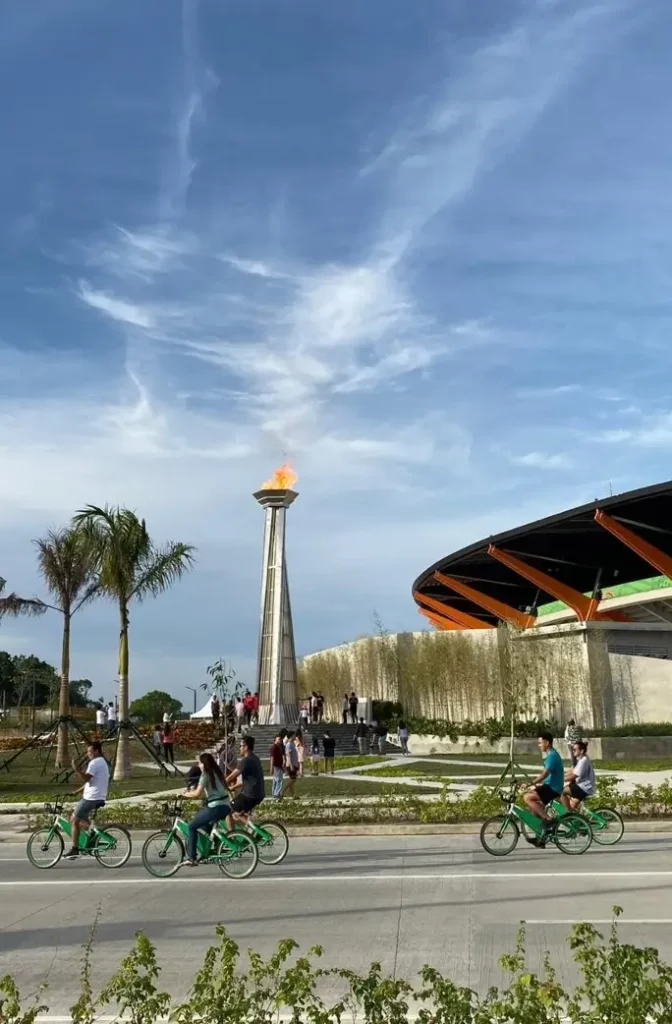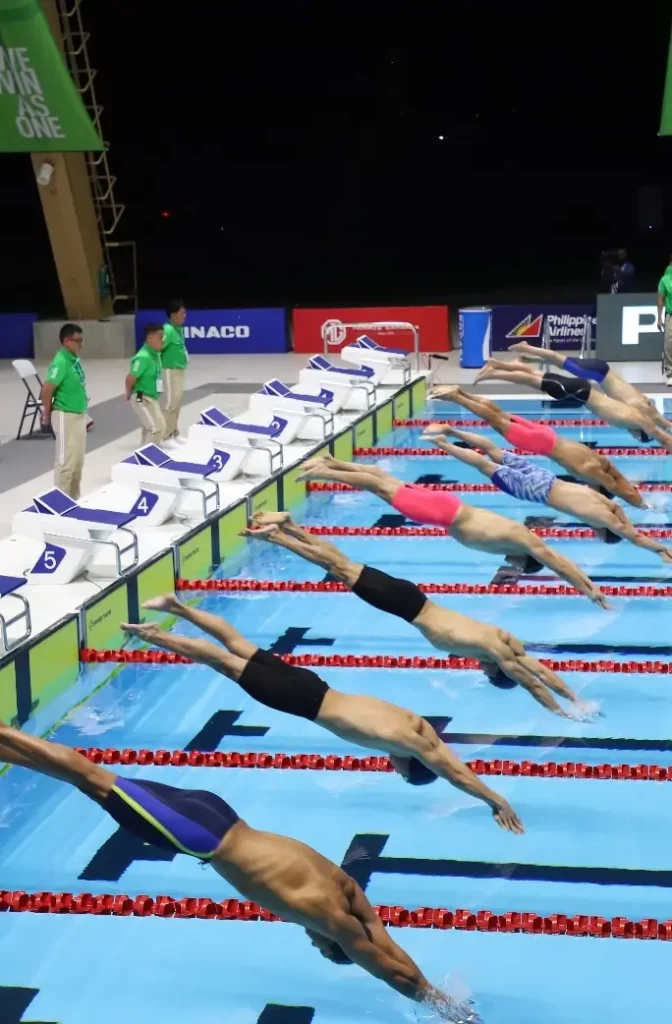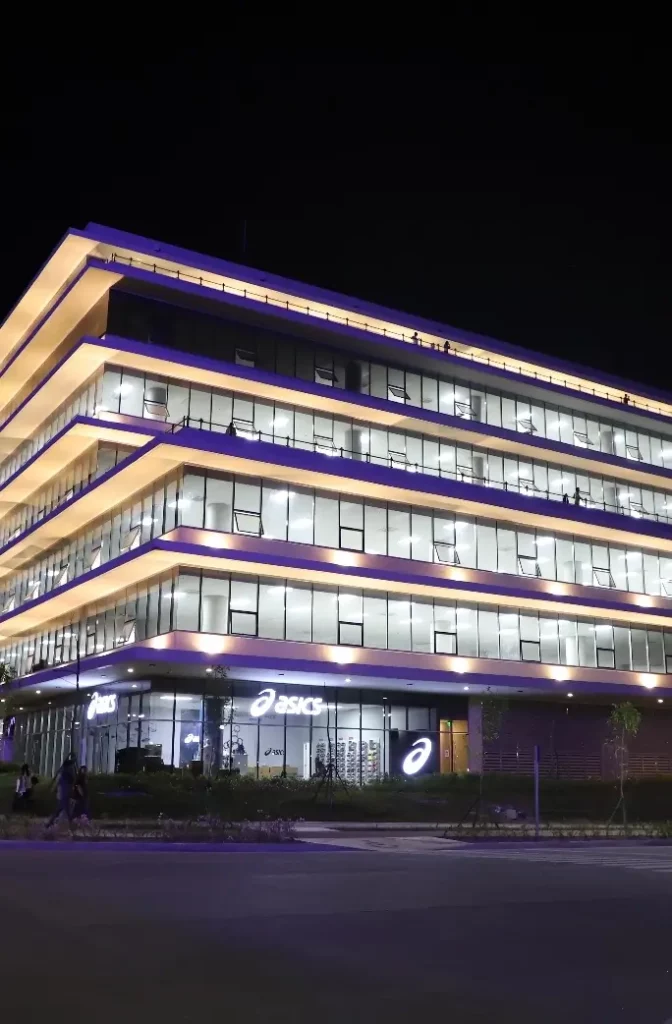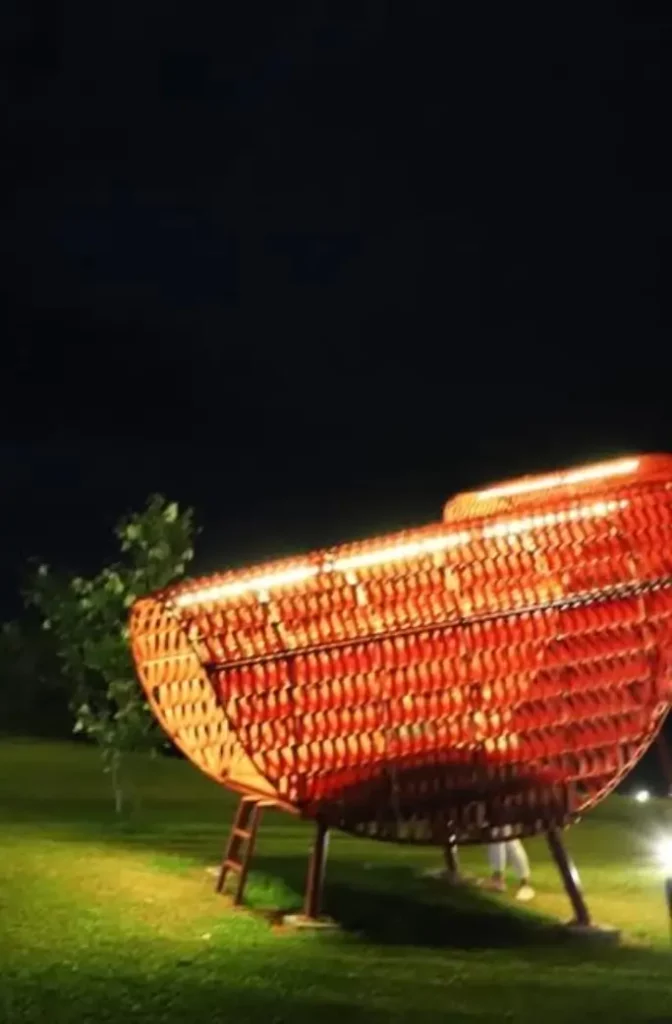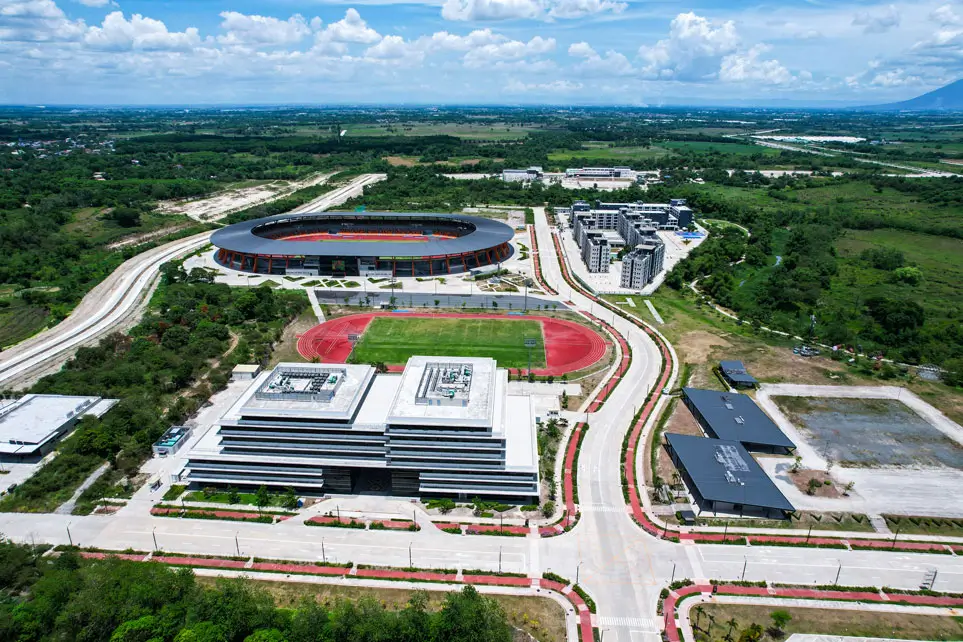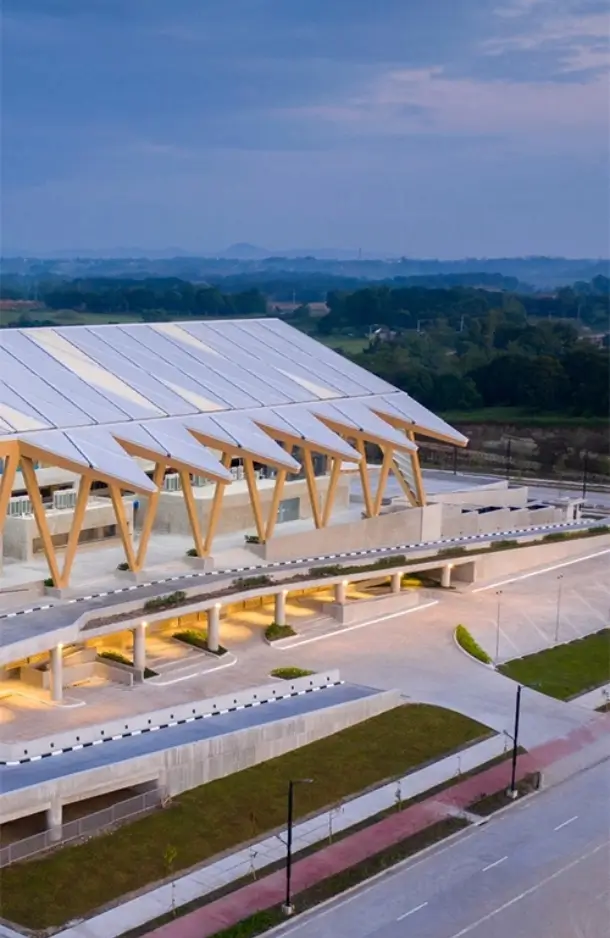
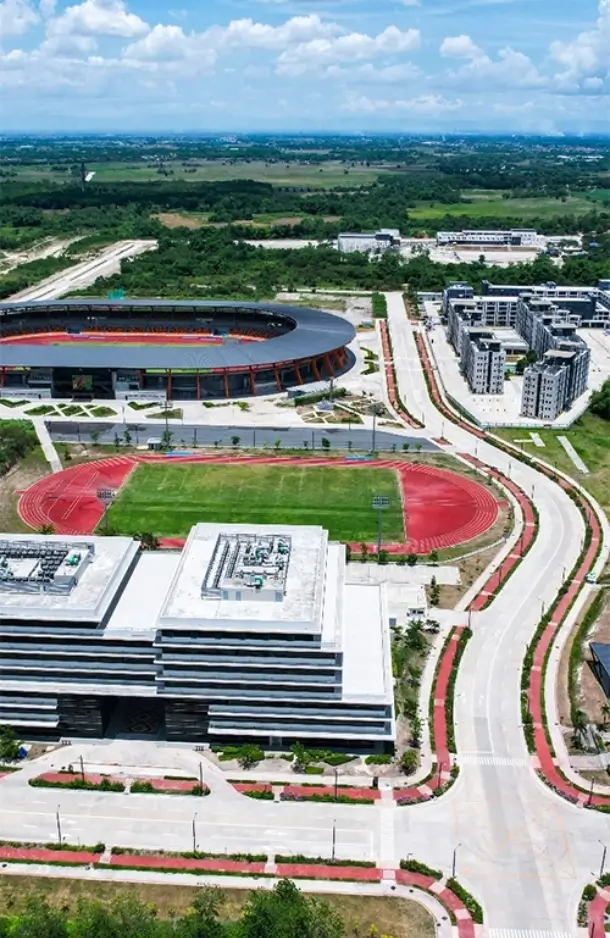
To live in New Clark City
Is to live in a place where it doesn’t feel like a pressure cooker of stress, pollution, high cost of living, traffic, and long working hours.
We built a small city in 18 months
A sports stadium alone can take about four years to build, but infrastructure developer MTD Philippines, together with the Bases Conversion and Development Authority (BCDA), was able to build a small city in just 18 months.
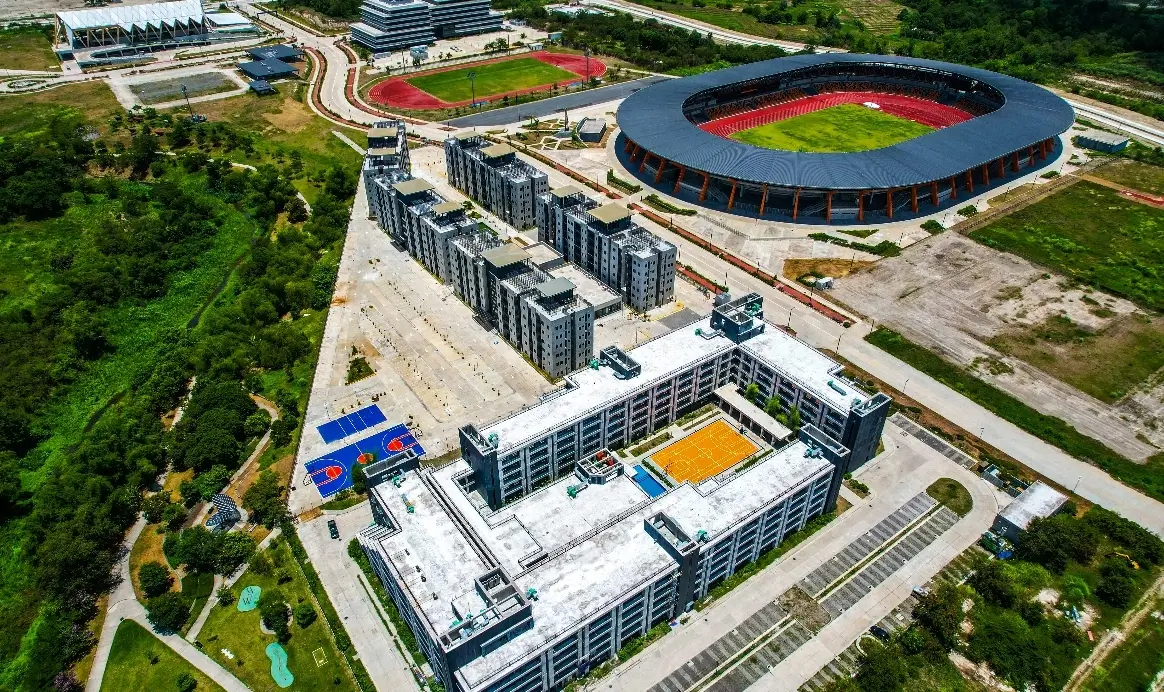
Athletics Stadium
The Athletics Stadium is a multi-purpose stadium located at the New Clark City in Capas, Tarlac, Philippines. It is the primary venue of the New Clark City Sports Hub, which is part of the National Government Administrative Center. It hosted the athletics events and the closing ceremony of the 2019 Southeast Asian Games.

The construction of the whole New Clark City Sports Hub, which also includes the Athletics Stadium, began on April 25, 2018, with a cement-pouring ceremony. By early July 2019, the stadium is already 98 percent complete, and the track oval is already available for use to Filipino athletes.
With the stadium almost complete by September 1, 2019, the first event held in the stadium was the final leg of the Philippine Athletics Track and Field Association weekly relay, a qualifier for athletes aspiring to represent the Philippines at the 2019 Southeast Asian Games, on that day. The construction of the stadium was finished on October 12, 2019, or 50 days ahead of the opening of the 2019 Southeast Asian Games.
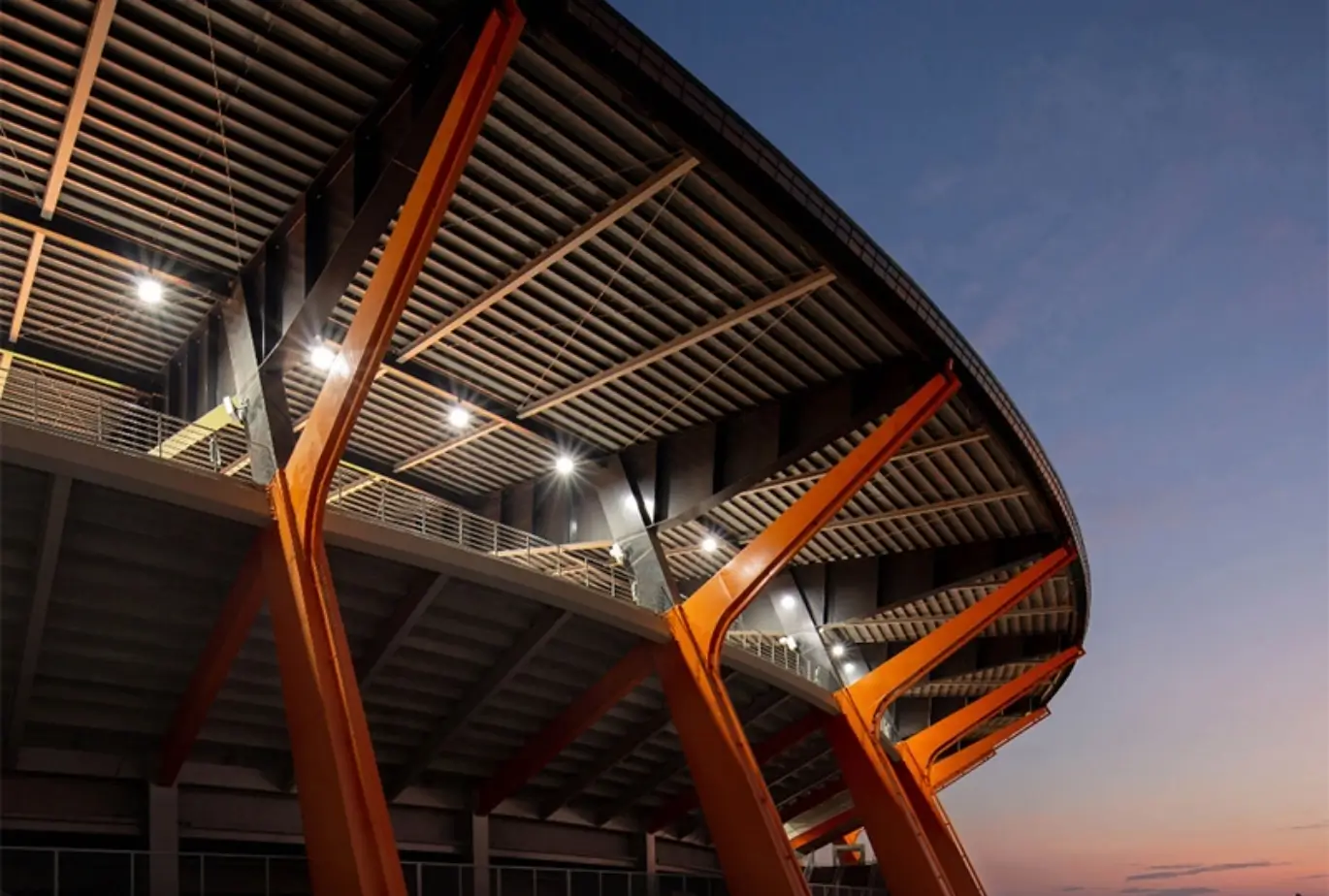
Local architecture firm, ROYAL PINEDA + Architecture • Design formerly BUDJI+ROYAL, were commissioned by the Bases Conversion Development Authority to work on the New Clark City Sports Hub. This also marks the first time that RP+ worked on a sports facility project and the first team involved in the project referred to the technical guidelines set by the International Association of Athletics Federations for the athletics stadium.
The Athletics Stadium itself had its design was derived from Mount Pinatubo, with its posts and façade made from lahar or volcanic debris from the volcano. Its ringed roofline was made to resemble a crater and be defined by a series of curving canopies. The main facade or the main entrance was orated with glass frames and its pillars are painted orange to represent the local sunset. The shade of the anti-corrosive paint, provided by Norwegian firm Jotun, is patented and is branded as “B+R Active Orange”. The pillars, inspired from the framework of the parol, supports the seating structure of the stadium as well as its roofing.
The stadium has an open-shed architecture and a raised roofline as a remedy against the tropical and humid climate of its locale. The structure is further ventilated by wind tunnels and its insulated oval roof. There are no pillars obstructing the view towards the centre of the stadium from its seating area with lights hung at the catwalk of its canopy.
Lead Arch. Royal Pineda describe the result of the approach in designing the stadium and the rest of the sports complex as a “𝗣𝗿𝗮𝗰𝘁𝗶𝗰𝗮𝗹 𝗟𝘂𝘅𝘂𝗿𝘆” or a deviation from relying on expensive materials to come up with an elegant result. The open ceiling allows the installation of additional utilities without dismantling the stadium’s ceiling board or doing any repainting works. The structural frames and lahar concrete were deliberately left unpainted for easy maintenance. The stadium and surrounding facilities are also engineered to resist earthquakes of up to 8.9 magnitude. The concept of “Practical Luxury” is also described as maximizing the facility’s usable space.
The Athletics Stadium was nominated for the 𝗝𝘂𝗿𝘆 𝗔𝘄𝗮𝗿𝗱 𝗼𝗳 𝗦𝘁𝗮𝗱𝗶𝘂𝗺 𝗼𝗳 𝘁𝗵𝗲 𝗬𝗲𝗮𝗿 𝟮𝟬𝟭𝟵 𝗼𝗳 𝗦𝘁𝗮𝗱𝗶𝘂𝗺𝗗𝗕.𝗰𝗼𝗺, an online database for stadiums. The New Clark City stadium was among the ten shortlisted stadiums being considered for the award. The stadium was also nominated for the 𝗘𝗻𝗴𝗶𝗻𝗲𝗲𝗿𝗶𝗻𝗴 𝗣𝗿𝗶𝘇𝗲 𝗮𝗻𝗱 𝘁𝗵𝗲 𝗦𝗽𝗼𝗿𝘁 𝗖𝗼𝗺𝗽𝗹𝗲𝘁𝗲𝗱 𝗕𝘂𝗶𝗹𝗱𝗶𝗻𝗴 𝗰𝗮𝘁𝗲𝗴𝗼𝗿𝘆 𝗮𝘄𝗮𝗿𝗱 𝗳𝗼𝗿 𝘁𝗵𝗲 𝟮𝟬𝟮𝟭 edition of the World Architecture Festival (WAF).
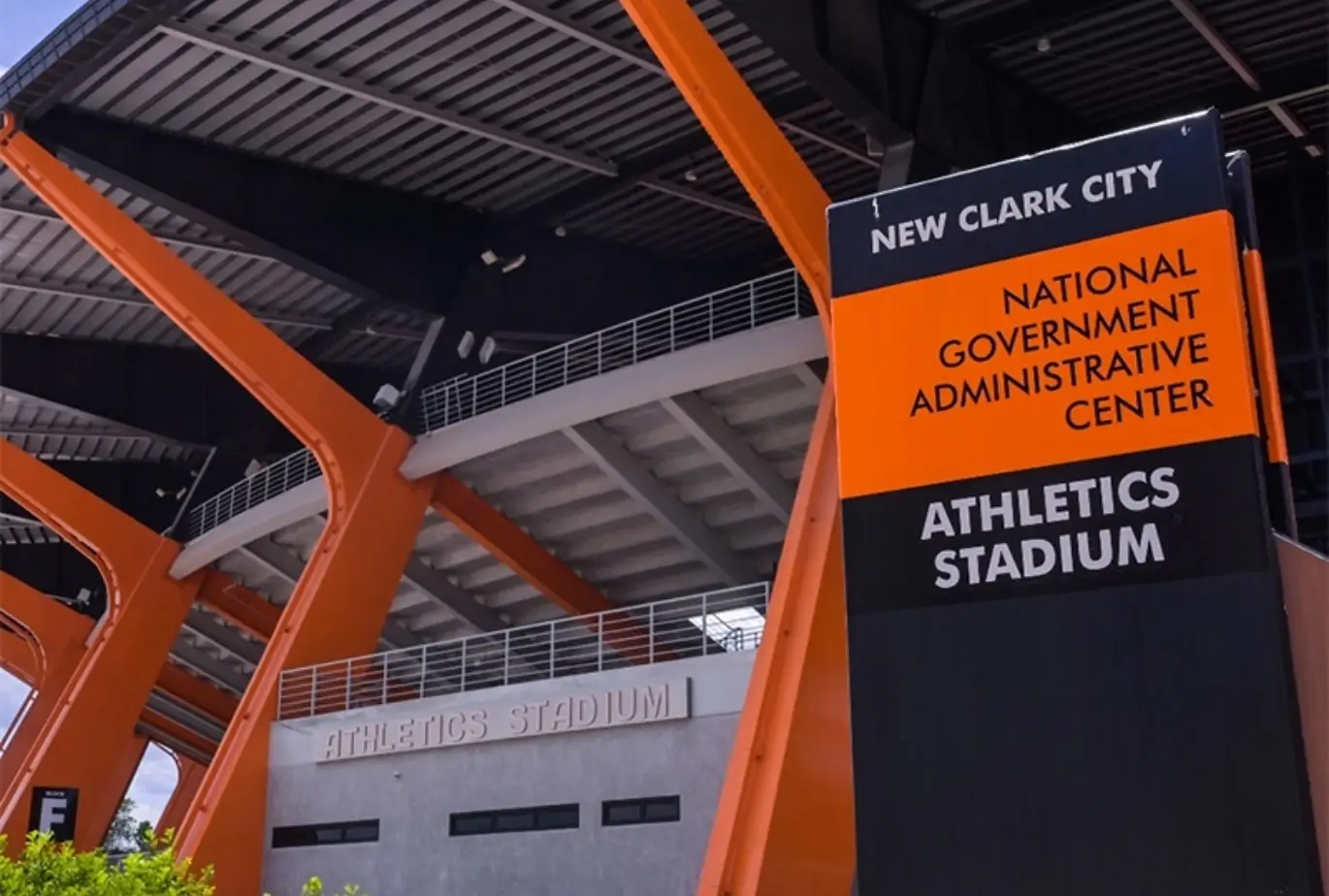
The stadium which sits on a footprint of 25,000 m2 (270,000 sq. ft) has a seating capacity for 20,000 people and has 21 rows of seats.
It is graded as a Class 1A Athletics Facility certified by the 𝗜𝗻𝘁𝗲𝗿𝗻𝗮𝘁𝗶𝗼𝗻𝗮𝗹 𝗔𝘀𝘀𝗼𝗰𝗶𝗮𝘁𝗶𝗼𝗻 𝗼𝗳 𝗔𝘁𝗵𝗹𝗲𝘁𝗶𝗰𝘀 𝗙𝗲𝗱𝗲𝗿𝗮𝘁𝗶𝗼𝗻𝘀, the first athletics facility in the Philippines to be so. The stadium also hosts a 400 m (1,300 ft) nine-lane standard athletics oval. The rubberized track was provided by Polytan. The stadium also has radio receivers installed that would allow the measuring of athletes performing in the venue through RFID timing. An outdoor track nearby the stadium used for warm-up is also equipped with the same technology. It will also have a football field of natural grass which according to developer Alloy MTD will satisfy FIFA standards.
A warm-up area is also hosted in the stadium which has equipment provided by Technogym and an indoor rubber track also provided by Polytan.
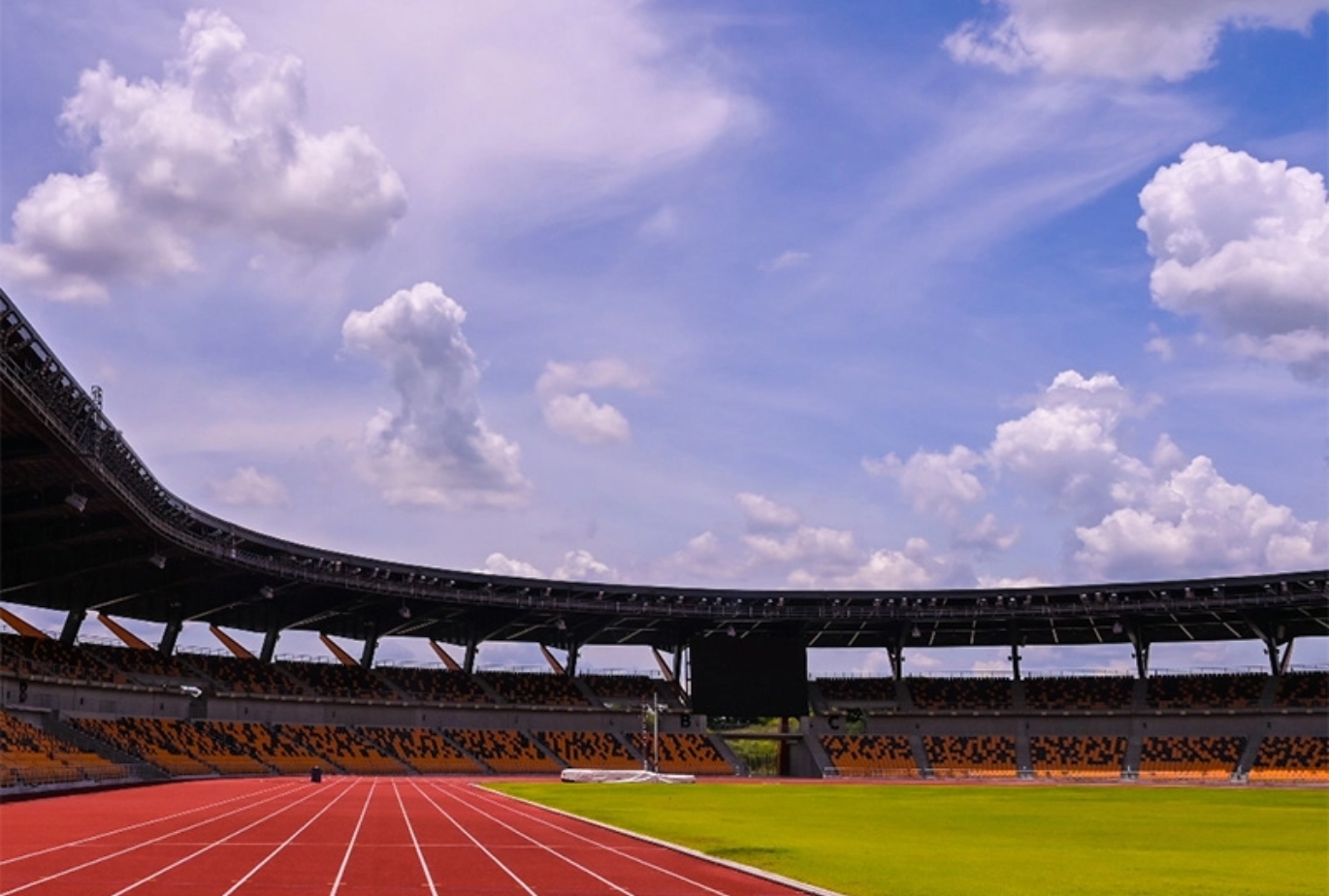
The stadium can be used to host various sporting events including athletics or track and field, and football, and also for the concert events. It hosted the closing ceremony of the 2019 Southeast Asian Games.
Aquatics Center
The Aquatics Center is a swimming and diving venue at the New Clark City in Capas, Tarlac, Philippines. It is one of the venues of the New Clark City Sports Hub, which is part of the NGAC – National Government Administrative Center. It hosted the aquatics events of the 2019 Southeast Asian Games.

The Aquatics Center is a 2,000-seater, world-class arena built with a 10-lane Olympic size swimming pool, a diving pool with inland diving training facility, and a warm up training pool. The Athletes’ Village, on the other hand, is made of 525 furnished units that can accommodate up to 1,000 occupants. Complete with training and fitness facilities, this is meant to house our national athletes, coaches, and visitors.
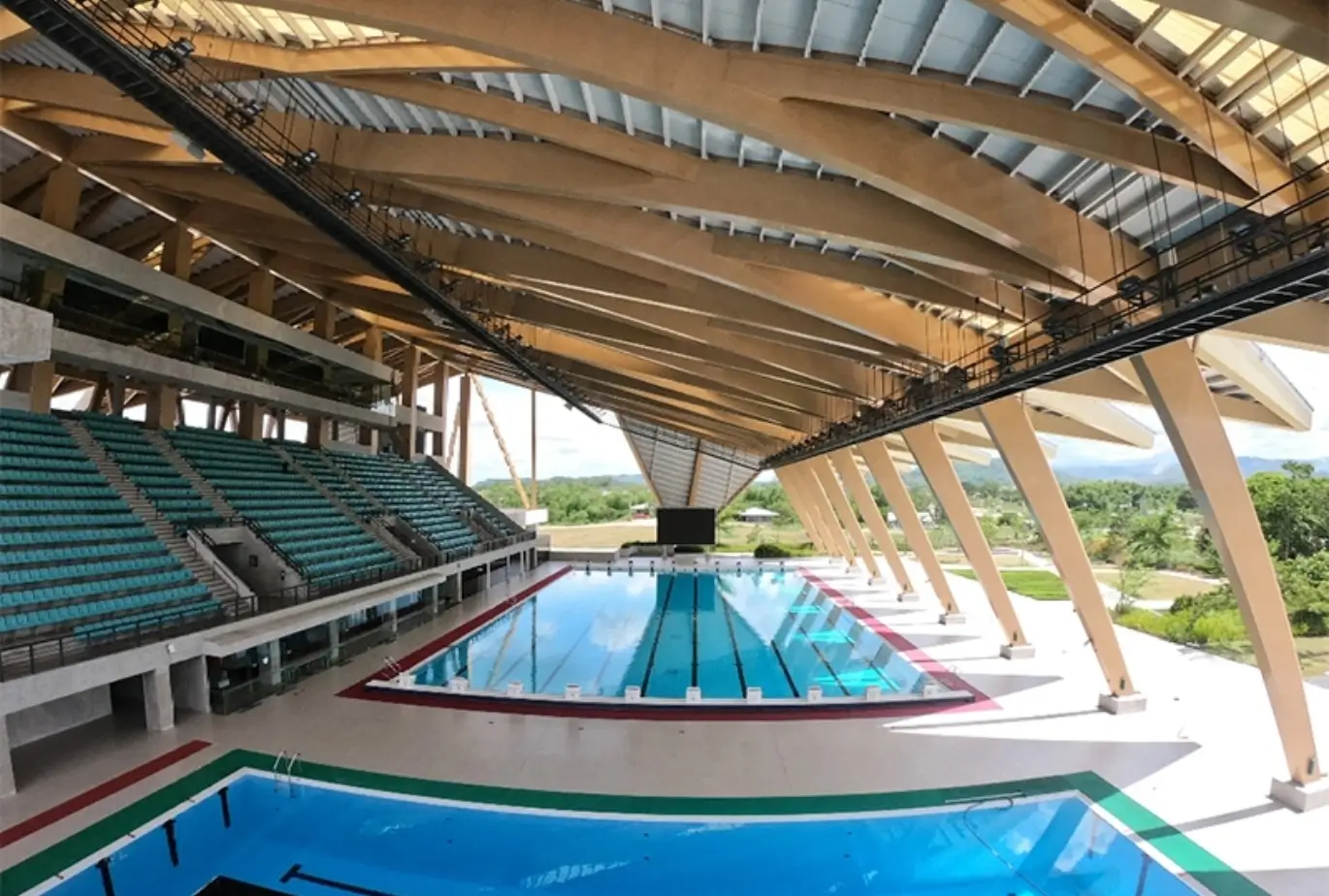
The construction of the whole New Clark City Sports Hub, which also includes the Aquatics Center, began on April 25, 2018, with a cement-pouring ceremony. Construction of the facility costed around ₱2 billion. By early July 2019, the Aquatics Center is already 85 percent complete. The venue was completed by August 2019 in time with the Philippine Swimming National Open as the first event hosted in the venue.
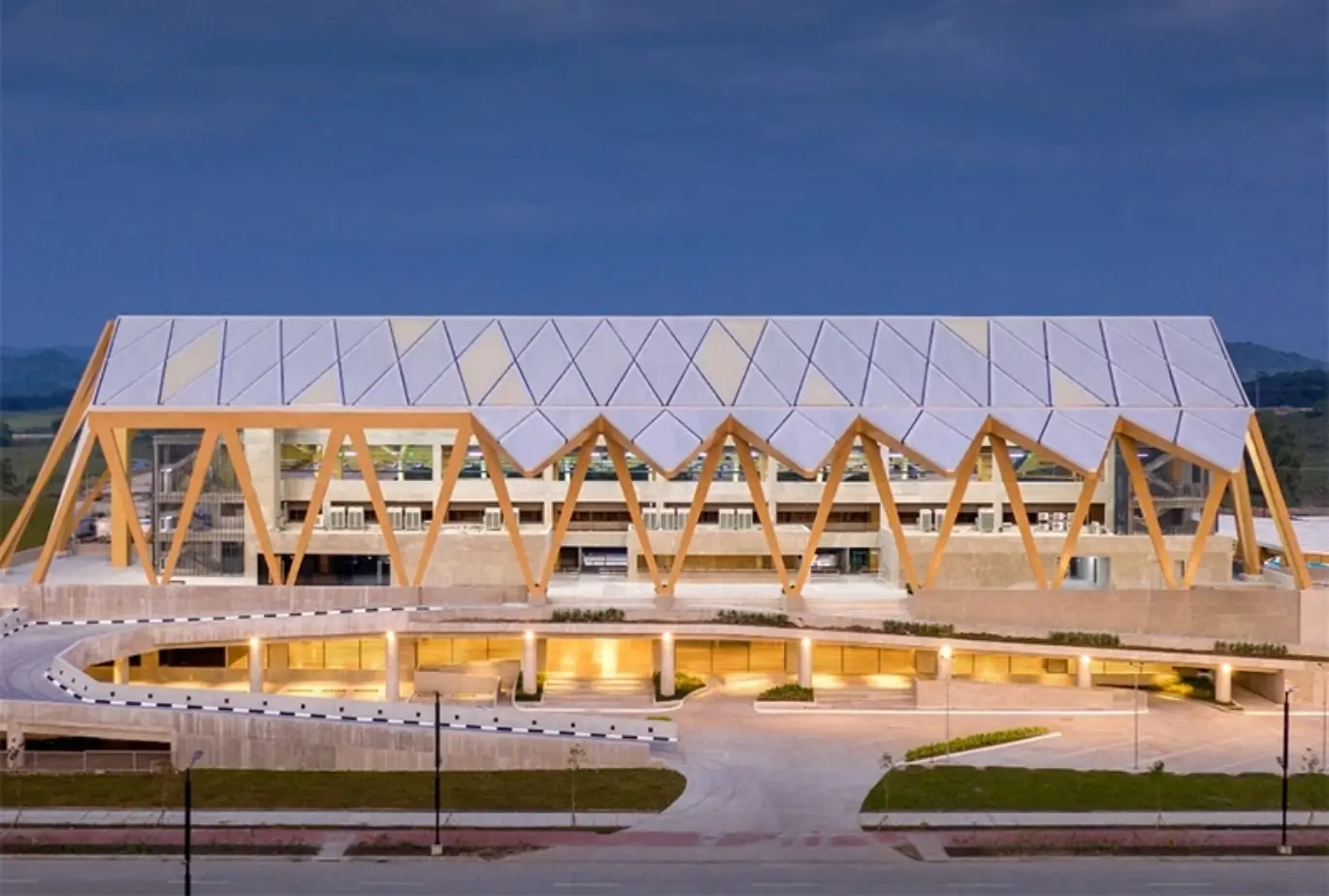
The Bases Conversion Development Authority commissioned local architecture firm, ROYAL PINEDA + Architecture • Design (𝘍𝘰𝘳𝘮𝘦𝘳𝘭𝘺 𝘉𝘜𝘋𝘑𝘐+𝘙𝘖𝘠𝘈𝘓) to work on the New Clark City Sports Hub. The Aquatics Center covers an area of 12,796 square meters (137,730 sq. ft) on a 21,936 square meters (236,120 sq. ft) plot of land.[6]
The Aquatics Center’s design was derived from the baklad a local fish trap, and the Filipino weaving and woodwork and exhibits a bamboo colour theme. The design consists of a huge open shed with a prismatic roof similar to a parol made of capiz coating. The roofing will be made from polytetrafluoroethylene (PTFE), a fiberglass material used for its lightweight property, durability, and weather resistance. The architects intend to cover the facility but still let natural light into its interior. At daytime, the architects intended the roof to resemble capiz windows used by old Philippine houses and at night the roof will be illuminated to resemble a lit parol.

The Aquatics Center has a two-level bleacher with a seating capacity of 2,000. Above the bleachers is a furnished and air-conditioned VIP lounge.
It hosts three swimming pools, an Olympic pool, a training poo, and a diving pool. All pools have hot-steel siding and PVC linings installed. The aquatics venue also has an underwater sound system. Besides the bleachers on the ground floor. is a dryland training area. The main facility is the competition pool which has a dimension of 50 by 25 meters (164 ft × 82 ft) meters and has a depth of 3 meters (9.8 ft). Each of the pool’s ten lanes are equipped with lap-timers in lieu of flip charts used traditionally in other aquatics venues. Adjacent to the competition pool is the diving pool has a dimension of 25 by 20 meters (82 ft × 66 ft) and a depth of 5 meters (16 ft). The diving pool is equipped with five diving platforms. Behind the diving pool is the 2 meters (6.6 ft) deep 8-lane training pool.
Adjacent to the bleachers is a dryland training area which hosts a foam diving area, trampolines, and stretch equipment for athletes.
The pools at the facility is accredited by the Fédération Internationale de Natation (FINA), an international sport governing body for water sports.
Others
The facility’s entrance is connected to the main road by a vehicle ramp while pedestrians including persons with disabilities can access the stadium through its side entry points. The lower ground floor hosts parking spaces for 26 cars and ten buses.
The Aquatics Center can be used for swimming and other water sports. The training pool while intended as a practice venue for athletes participating in international tournaments could also be used to hold local competitions. The Philippine Swimming National Open was held from August 31 to September 3, 2019 as the first event. The facility hosted the aquatics events, including water polo, as part of the 2019 Southeast Asian Games and it is also set to host the 2021 Asian Swimming Championships in November 2021.
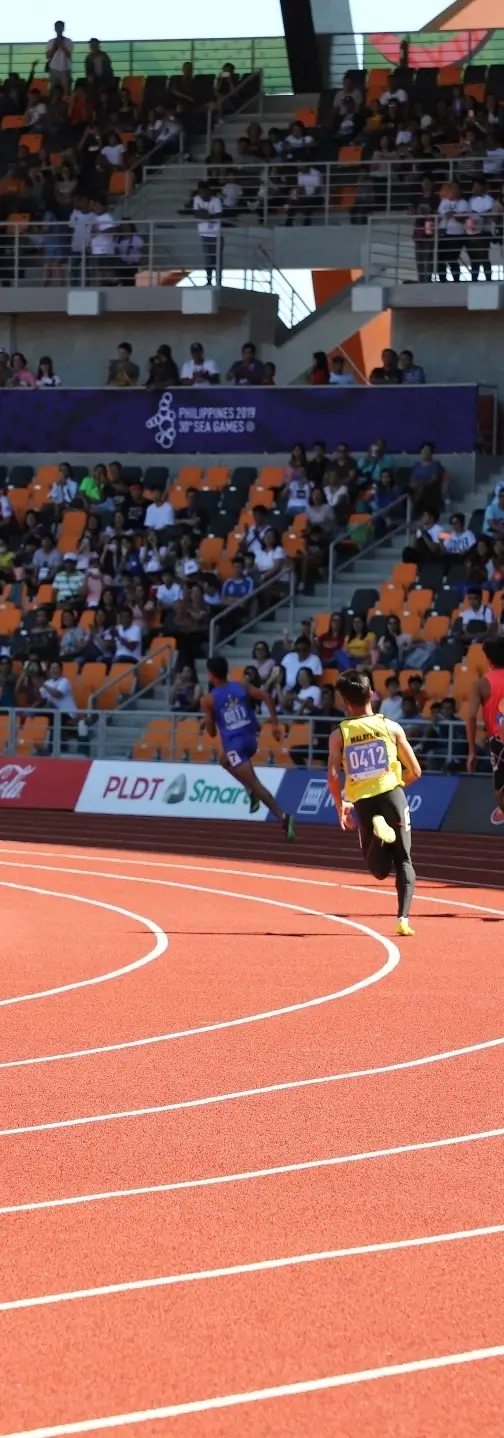
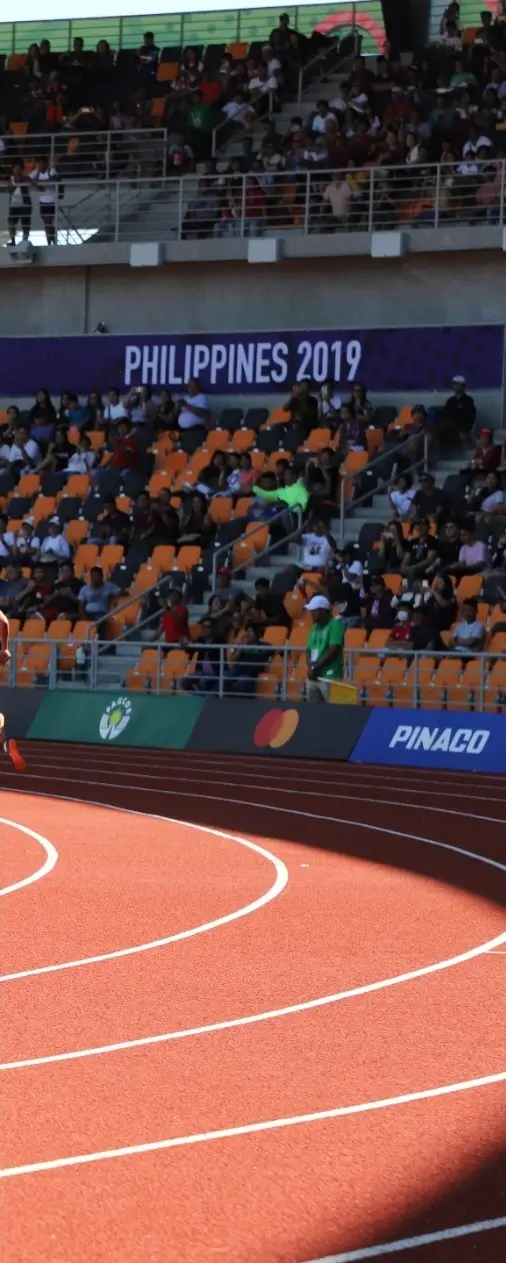
Engr. David proudly declares that the team was able to finish the negotiation and proposal presentation in the shortest time possible. These steps are usually tedious and take a long time to finish. With the help of BCDA, it was done from August 2017 (submission of proposal) until January 23, 2018 (groundbreaking). In that short period of time, the team was able to go through the evaluation, negotiation, and Swiss challenge processes without a major hitch.
“It wouldn’t have been possible without the help of BCDA,” Engr. David says. “There were no shortcuts, no red tape—BCDA just stayed with us from 9:00 a.m. to 12 midnight every day, 5 days a week, until we finished the negotiations.” MTD Philippines, with the help of BCDA, filled out the necessary forms and the required permits were obtained right on schedule, sometimes even ahead of time.
It certainly helped that BCDA has a one-stop shop for processing all the documents. BCDA also facilitated conversations with other government agencies to expedite certain processes. Because of this careful attention to detail and diligence in doing the work, there was very little back-and-forth movement as far as papers were concerned.
“BCDA doesn’t sleep, so we don’t as well.” Engr. David was, of course, half-joking when he said this. But it pretty much sums up the kind of conscientiousness and hard work that BCDA officials and employees put in every project.
When there is an early morning meeting, for example, one can expect everyone concerned to come prepared and be at the venue ahead of time. “When you say Build, Build, Build, it’s really Work, Work, Work—it’s not just presentations going around but on-the-ground building and doing things that they (BCDA) say they will do,” Engr. David shares.
It doesn’t matter that New Clark City is happening at the same time as the new Clark airport terminal and the roads to NCC, among many other things. For BCDA, having too much on their plate is no excuse to deliver sloppy work.
BCDA President and CEO Vince Dizon leads the organization by setting a good example for all the members of the organization. According to Engr. David, “He (President Vince) is here every Sunday at 8:00 a.m., after his morning exercise, to walk the entire facility, even when it’s raining. He would wear boots and carry a walking stick, no golf carts or cars.”
Engr. David proudly declares that the team was able to finish the negotiation and proposal presentation in the shortest time possible. These steps are usually tedious and take a long time to finish. With the help of BCDA, it was done from August 2017 (submission of proposal) until January 23, 2018 (groundbreaking). In that short period of time, the team was able to go through the evaluation, negotiation, and Swiss challenge processes without a major hitch.
“It wouldn’t have been possible without the help of BCDA,” Engr. David says. “There were no shortcuts, no red tape—BCDA just stayed with us from 9:00 a.m. to 12 midnight every day, 5 days a week, until we finished the negotiations.” MTD Philippines, with the help of BCDA, filled out the necessary forms and the required permits were obtained right on schedule, sometimes even ahead of time.
It certainly helped that BCDA has a one-stop shop for processing all the documents. BCDA also facilitated conversations with other government agencies to expedite certain processes. Because of this careful attention to detail and diligence in doing the work, there was very little back-and-forth movement as far as papers were concerned.
Clark Global City and the ease of doing business in Clark
Clark Global City is a mixed-use central business district development at the Clark Freeport Zone.
“If the decision-makers are not around, a mere tiling work could take forever to do,” Engr. David explains. But since BCDA is so hands-on during the whole process, decision making is quick. Once a decision is made on even the smallest things, execution comes after and completion can be achieved quickly.
“BCDA is always here,” he says, “there are no weekends, no holidays. The executives are here to make decisions right away, and so we are happy with the pace of development.” Aside from making quick decisions, problems or challenges that arise are immediately resolved because the heads can easily come together and come up with solutions.
